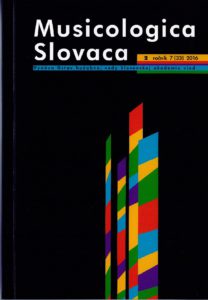Organový pozitív v Sáse a význam komplexného organologického výskumu
The Positive Organ in Sása and the Significance of Complex Organological Research
Author(s): Andrej Štafura, Štefan Nagy, Naďa BeronskáSubject(s): Cultural history, Music, Local History / Microhistory, History of Art
Published by: SAV - Slovenská akadémia vied - Ústav hudobnej vedy Slovenskej akadémie vied
Keywords: organ; Sása; Kiszely; organ metal; scaling; intonation; tuning; frequency analysis of sound;
Summary/Abstract: The paper contains new information about the positive organ in the village of Sása (district of Revúca). The following facts were determined by analysis: the identity of the organ-builder Michal Kiszely; an approximate dating of the instrument’s construction to the 1820s; and the instrument’s precise disposition. Examination of the scaling of all registers showed a resultant scale proportion of 5:8, and also a secondary raising of the cut-up in all registers. From material research of the wooden registers it was found that resonance wood was not used; the resonant Norway spruce was used for a small part of pipes. This material will enable us to date the instrument’s construction with the help of dendrochronology. The metal registers from the organ’s metallic part are composed of an alloy in the proportion of 65% tin and 35% lead. Apart from degradation by woodworm, the original intonation also has suffered damage, as shown by analysis of the frequency spectrum of sound in all registers. The pitch needs to be retuned in the wooden as well as in the metal registers. Our summary organological findings concerning this instrument can be used in further application outputs.
Journal: Musicologica Slovaca
- Issue Year: 6/2015
- Issue No: 2
- Page Range: 215-249
- Page Count: 35
- Language: Slovak

